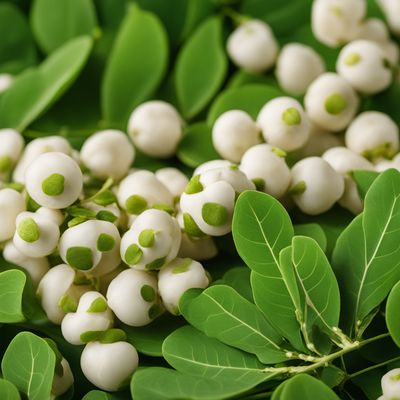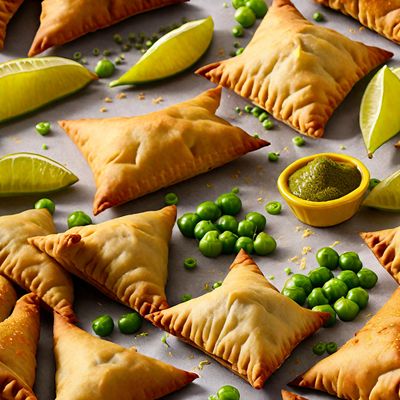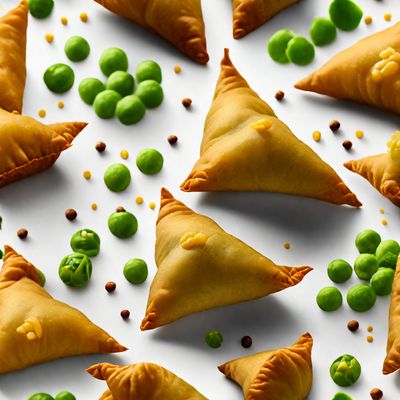
Ingredient
Peas (without pods) and similar-
Vibrant Gems: Exploring the World of Peas
Peas are small, round legumes that are typically green in color. They have a sweet and slightly earthy flavor with a tender yet slightly firm texture. Peas can be enjoyed fresh, frozen, or canned, and they are often used in a wide range of culinary preparations, from simple side dishes to complex main courses.
Origins and history
Peas have been cultivated for thousands of years and have a rich history dating back to ancient civilizations such as the Egyptians, Greeks, and Romans. They were highly valued for their nutritional content and were even used as a form of currency in some regions. Peas gained popularity in Europe during the Middle Ages and eventually made their way to the Americas with the arrival of European settlers.
Nutritional information
Peas are a good source of vitamins A, C, and K, as well as dietary fiber and plant-based protein. They are low in calories and fat, making them a healthy addition to meals. Additionally, peas contain antioxidants and other beneficial compounds that contribute to overall health and well-being.
Allergens
Peas are not commonly associated with allergens, but individuals with legume allergies should exercise caution when consuming peas or pea-based products.
How to select
When selecting fresh peas, look for pods that are bright green, plump, and firm. Avoid pods that are discolored, shriveled, or have visible signs of damage. If purchasing frozen peas, ensure that the packaging is intact and free from ice crystals, which may indicate thawing and refreezing. Canned peas should be checked for any signs of spoilage, such as bulging or dented cans.
Storage recommendations
To maintain the freshness of fresh peas, store them in a perforated plastic bag or airtight container in the refrigerator for up to 3-4 days. Frozen peas should be kept in the freezer, while canned peas can be stored in a cool, dry pantry for an extended period. Once cooked, leftover peas should be refrigerated and consumed within 2-3 days.
How to produce
Peas can be easily grown in home gardens or containers. They thrive in cool climates and can be sown directly in the soil or started indoors and transplanted. Regular watering and proper support for climbing varieties are essential for successful pea cultivation.
Preparation tips
To prepare fresh peas, start by shelling them and removing the outer skin. Bring a pot of salted water to a boil and blanch the peas for 2-3 minutes until they are tender yet still vibrant green. Drain and immediately transfer the peas to an ice bath to stop the cooking process. Frozen peas can be cooked directly from frozen, while canned peas can be heated in a saucepan or microwave. Peas can be enjoyed as a standalone side dish, added to salads, soups, stir-fries, or incorporated into various recipes.
Substitutions
Snow peas and sugar snap peas can be used as substitutes for peas in certain dishes. Snow peas have a delicate and crisp texture, while sugar snap peas offer a crunchy and sweet flavor. Both varieties can be used in stir-fries, salads, or enjoyed as a snack. However, their slightly different characteristics may alter the overall taste and texture of the dish.
Culinary uses
Peas are incredibly versatile and can be used in a wide range of culinary applications. They are commonly added to soups, stews, risottos, and pasta dishes. Peas also pair well with other spring vegetables such as asparagus and mint, creating vibrant and refreshing salads. Additionally, they can be pureed into dips, spreads, or used as a filling for savory pastries and pies.
Availability
Peas are cultivated and consumed worldwide. They are commonly available in grocery stores, supermarkets, and farmers markets throughout the year.
More ingredients from this category

Moringa (without pods)
The Miracle Tree: Moringa's Marvels

Garden peas (without pods)
The Petite Powerhouses: Garden Peas

Asparagus peas (without pods)
The Delicate Gems of Spring

Pigeon peas (without pods)
The Protein Powerhouse: Pigeon Peas

Chickpeas (without pods)
The Versatile Legume: Chickpeas

Chickling vetches (without pods)
The Nutrient-Packed Legume



